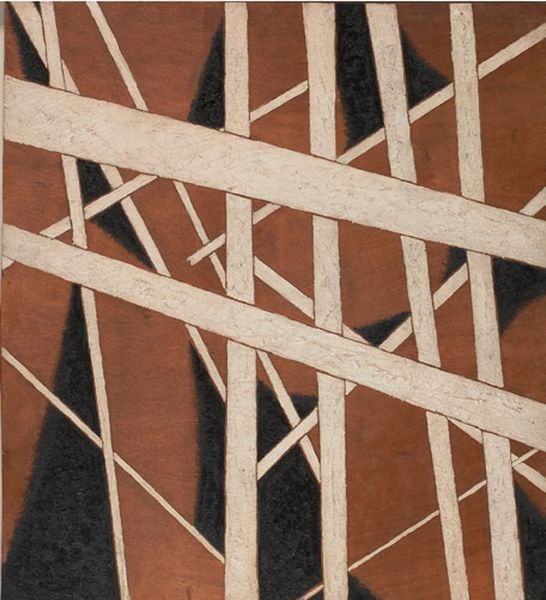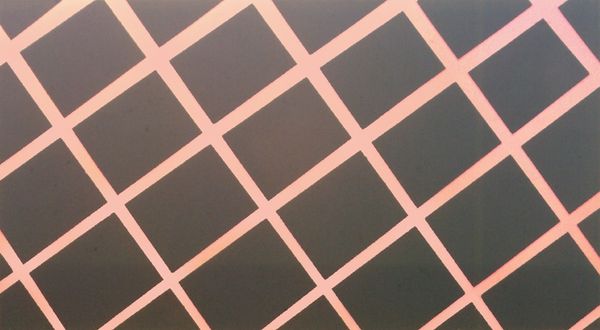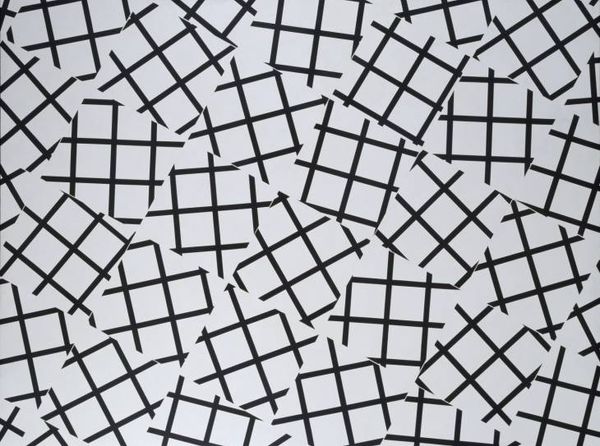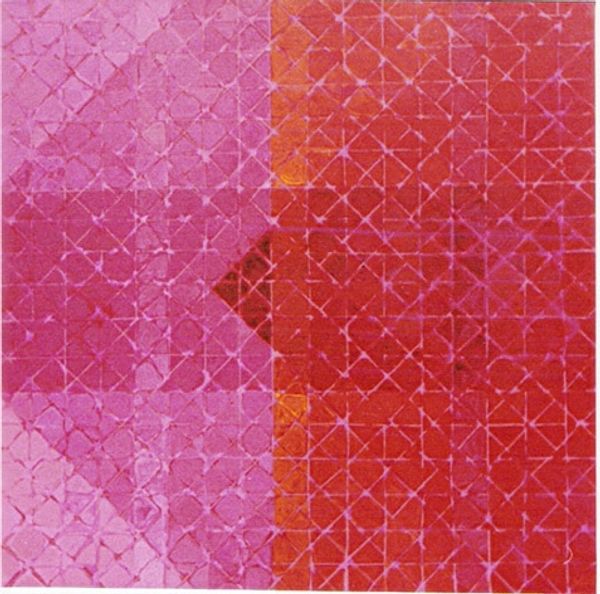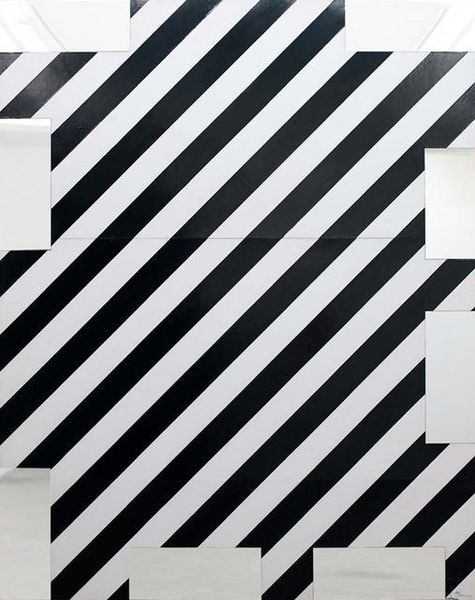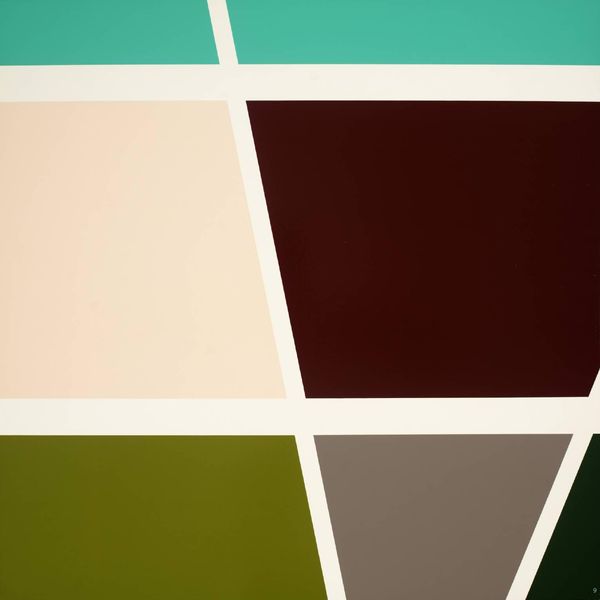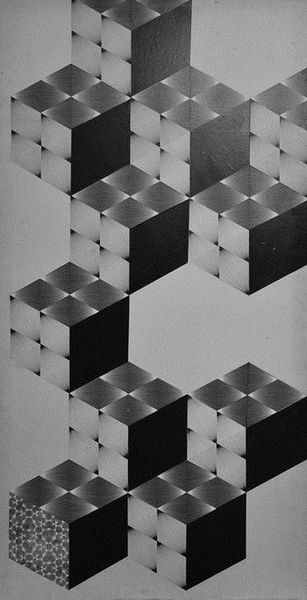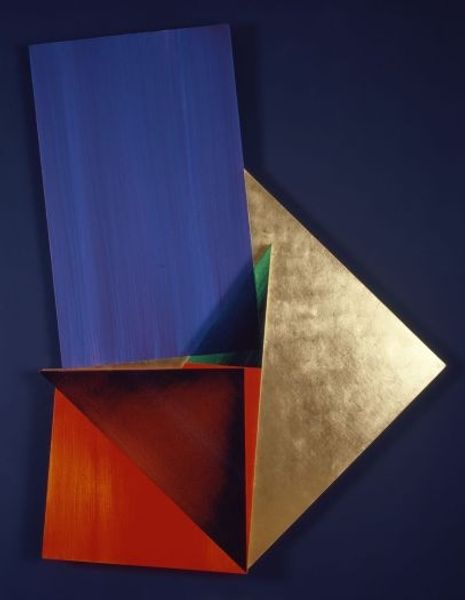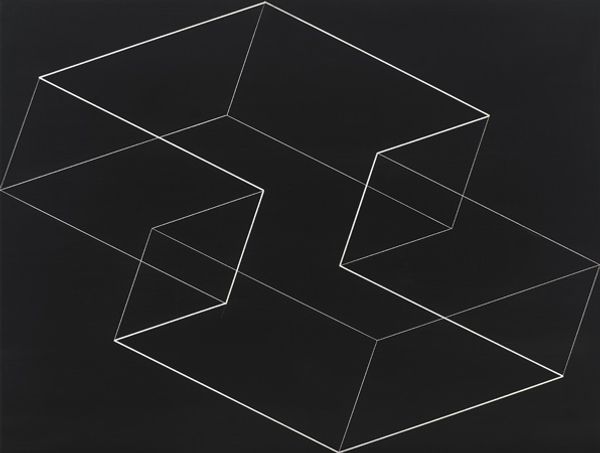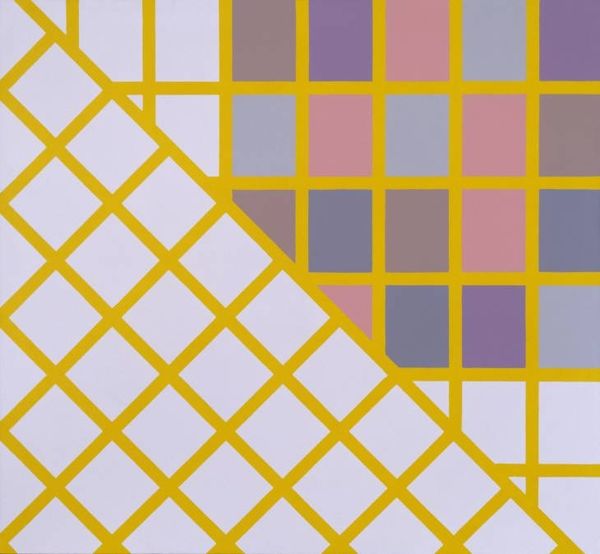
acrylic-paint
#
abstract-expressionism
#
acrylic-paint
#
geometric pattern
#
abstract pattern
#
geometric
#
repetition of pattern
#
line
#
hard-edge-painting
Copyright: Karl Benjamin,Fair Use
Curator: This "Untitled" acrylic painting from 1958 by Karl Benjamin is striking, isn't it? The shapes are so bold. What do you make of it? Editor: It's visually arresting! The color palette is quite muted. With those structured lines against the black background, do you think it relates to mid-century modernism and the manufacturing boom happening at the time? Curator: Exactly! Let's consider the materials: Benjamin's use of acrylic, a relatively new medium then, reflects technological advancements influencing artistic production. Do you think this points to his embracing a more efficient, perhaps even a more democratized approach to artmaking? Editor: That’s interesting, since it challenges traditional artmaking practices that value oil paints for their blending capabilities. Acrylic dries quickly. The edges here are very hard, there is no blending! Curator: Precisely. This hard-edge painting, as the movement is called, departs from the gestural expressiveness of abstract expressionism that preceded it. Think about the shift in the labor involved. The quick-drying acrylic facilitates faster production and a flatness that rejects the illusion of depth prized in earlier painting styles. What do you make of the fact that his forms look so precisely manufactured but were executed by hand? Editor: That adds an intriguing layer! Almost like he’s mimicking industrial production through manual labor. Curator: Absolutely. It brings the question of art versus craft versus industrial production to the fore. Now how would you interpret this repetitive geometry of slightly irregular quadrilaterals? Editor: So by repeating the basic quadrilateral pattern over and over again it questions our traditional notions of painting and moves closer to textile production? Curator: In some ways yes! Also, Benjamin subverts traditional boundaries, presenting us with artwork for mass culture or something with greater utility! Anything seem strange or perhaps useful for understanding the labor situation at the time of its creation? Editor: I've certainly gained a new appreciation for it. I now see a quiet, revolutionary dialogue between the hand-made and machine-made within his abstract expressionism! Curator: And seeing that relationship lets us view it as both a product of its time and a commentary on that very production, right?
Comments
No comments
Be the first to comment and join the conversation on the ultimate creative platform.

